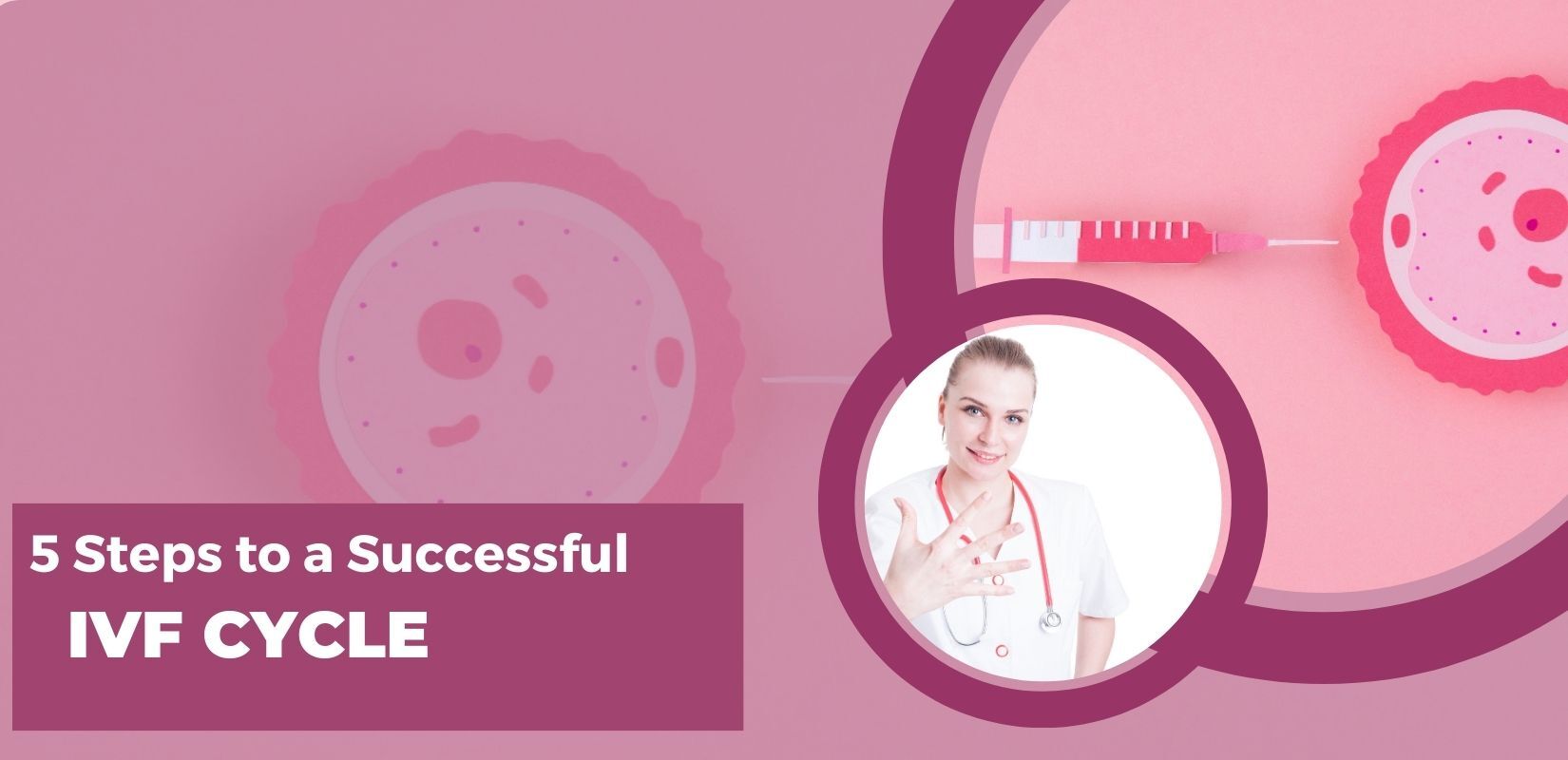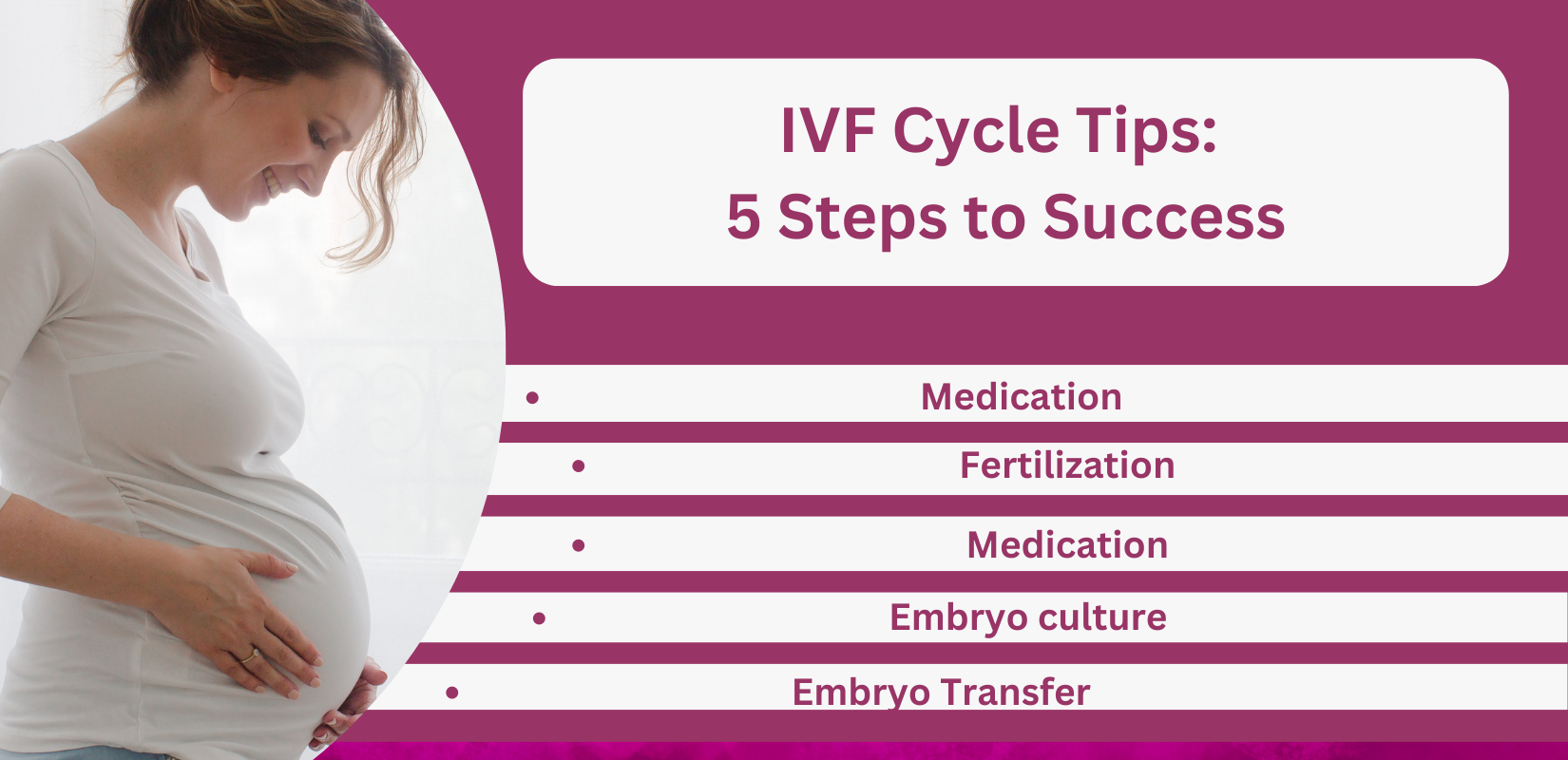
It is a common problem for couples to experience infertility. More than 37% of women between the ages of 15 and 49 have difficulty getting pregnant. The medical industry has made several advances in fertility improvement to overcome this issue and help people conceive. In-vitro fertilization (IVF) has become one of the most innovative techniques in recent years.
It involves using medications and light surgery to facilitate the integration of egg and sperm within the uterus during IVF, a safe and painless procedure. It can typically take up to two months for an IVF procedure to be successful.
Fertility problems, such as infertility due to the following factors, can be treated with IVF:

There are five steps involved in the IVF process step-by-step timeline, and they are as follows:
Let’s understand the IVF process step by step in depth.
Whether you use your eggs or those of an egg donor, your doctor will prescribe hormones to stimulate your ovaries into producing more eggs rather than just one. The IVF procedure is more likely to succeed if at least one viable embryo is present.
To produce ovarian follicles, you will require various fertility medications ranging from follicle-stimulating hormones (FSH). This medication assists eggs in maturing and preparing the uterus for fertilized eggs.
Egg collection commonly occurs over ten days after ovarian stimulation. Your ovarian follicles will be monitored through a vaginal ultrasound, and your estrogen levels will be checked through blood tests. We can begin the egg retrieval process once we determine that your follicles are large enough based on an ultrasound measurement.
A minor surgical procedure is required once the eggs have matured in the ovaries to extract them. Using an ultrasound guide, each ovary is tapped using a thin needle to gather eggs. It is possible to experience some cramping following the procedure, which can be relieved with medication. On the same day, the male partner will be asked to donate sperm.
When it comes to IVF, there are two primary ways to fertilize the egg:
A minor surgical procedure is required once the eggs have matured in the ovaries to extract them. Using an ultrasound guide, each ovary is tapped using a thin needle to gather eggs. It is possible to experience some cramping following the procedure, which can be relieved with medication. On the same day, the male partner will be asked to donate sperm.
Embryos, now fertilized eggs, undergo close monitoring during their development for several days. The embryologist ensures that the embryos grow correctly to transfer the best-quality embryo into the uterus. This process plays an essential role in the successful completion of IVF procedures.
Following the egg collection, you will also be provided another medication to help. Embryos will be transferred into your body after you have undergone this procedure.
A catheter will be used to place the embryos in your uterus three to five days after fertilization with the help of a catheter. Multiple embryos are transferred back into you in an attempt to develop at least one embryo in your uterus. Many IVF women have numerous embryos due to the possibility of more than one implant.
The pain associated with IVF varies from patient to patient, but most patients report it not being overly painful. It is possible, however, to experience mild discomfort or pain during certain aspects of the process. There are plenty of advantages to in vitro fertilization for women struggling with infertility for a long time, giving them plenty of hope to have a baby and get pregnant.
Q.1 - In IVF, which step is most crucial?
Fertilization occurs in a laboratory dish, the most crucial step in IVF.
Q.2 - From start to finish, how long does IVF take?
From ovarian stimulation to embryo transfer, IVF takes about a month. Individual circumstances and medical conditions will determine how long the treatment will last.
Q.3 - Which IVF cycle is most successful?
Infertility issues, medical history, age, and medical history can all play a role in the success rate of an IVF cycle. There is generally a lower success rate in the first cycle than in subsequent processes.
Q.4 - How can IVF be successful?
Positive pregnancy tests, missed periods, and ultrasound confirmation of normal development of the foetus are all signs of a successful IVF procedure.
Your email address will not be published. Required fields are marked *